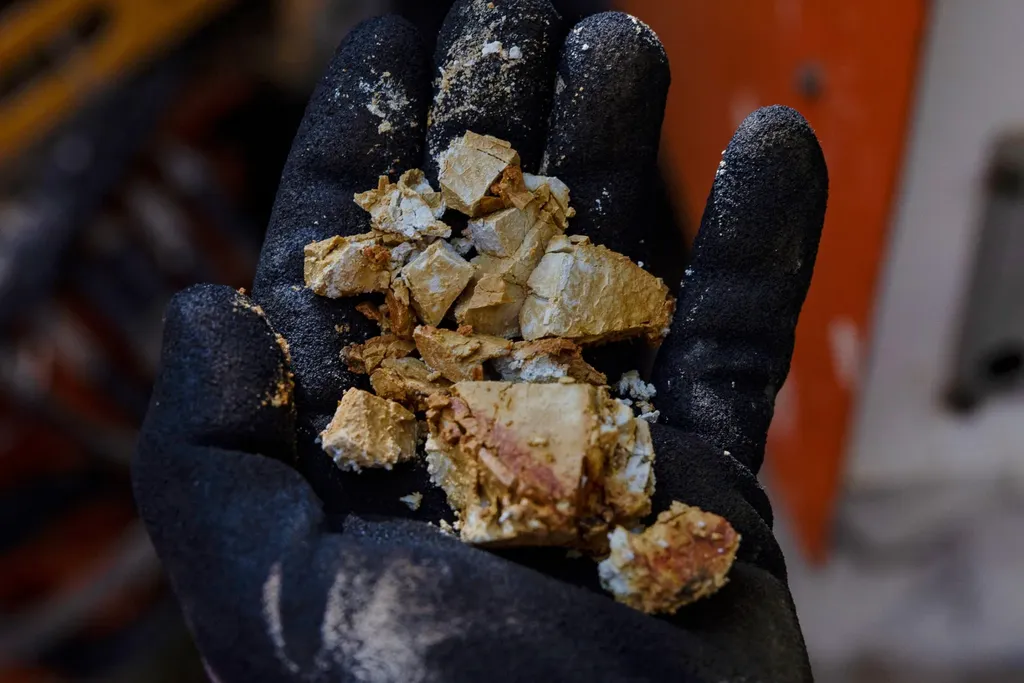The United States is stepping up its diplomatic efforts in Central Asia, with a keen eye on securing rare earth elements and critical minerals. This strategic shift, highlighted by the upcoming C5+1 summit in Washington on November 6, 2025, aims to diversify global supply chains and reduce dependence on China, which currently dominates the rare earth market. The immediate implications are significant, promising to reshape the global landscape of critical mineral acquisition and bolstering Washington’s geopolitical standing in a region historically influenced by Russia and China.
The U.S. diplomatic push in Central Asia is a multi-faceted strategy designed to establish robust alternative supply chains for rare earth elements and other critical minerals. Central to this strategy is the C5+1 diplomatic forum, which brings together the United States and the five Central Asian republics: Kazakhstan, Kyrgyzstan, Tajikistan, Turkmenistan, and Uzbekistan. The upcoming summit in Washington, marking the first such gathering at the White House, is poised to be a pivotal moment, with critical minerals and rare earths high on the agenda. This follows preparatory visits by U.S. Special Envoy for South and Central Asia Sergio Gor and Deputy Secretary of State Christopher Landau to Uzbekistan and Kazakhstan, where “critical materials” were a central discussion point.
A significant development in this evolving narrative is the memorandum of understanding on critical minerals cooperation signed between Uzbekistan and the U.S. in September 2024, signaling a deepening bilateral commitment. Beyond rare earths, the U.S. is also actively facilitating a private American bid by Cove Kaz Capital Group LLC for Kazakhstan’s substantial Upper Kairakty and North Katpar tungsten deposits. This move directly challenges state-backed Chinese bidders, illustrating the broader U.S. strategy to compete for crucial raw materials. The U.S. International Development Finance Corporation (DFC) has also expressed interest in co-financing midstream mining and processing infrastructure in Central Asia, indicating a commitment to developing not just extraction but also crucial processing capabilities within the region. This focus on midstream development is critical, as China’s dominance extends beyond mining to an estimated 90% of global processing capacity.
The urgency of these efforts is underscored by China’s near-monopoly on rare earth elements and its historical willingness to use export controls as a geopolitical tool. While a “tactical pause” on some Chinese rare earth export curbs was agreed upon in October 2025 following a meeting between U.S. President Trump and Chinese President Xi Jinping, this agreement is set to expire in 2026. This looming deadline intensifies the need for the U.S. to rapidly secure alternative sources. Central Asian nations, particularly Kazakhstan and Uzbekistan, possess significant, largely underdeveloped reserves of rare earths and other critical minerals, offering a crucial opportunity for Western investment and technology to unlock their potential. The immediate industry reaction has been one of cautious optimism, with mining and technology sectors keenly observing the progress of these diplomatic initiatives as they seek greater supply chain predictability.
The U.S.’s intensified rare earth diplomacy in Central Asia is set to create significant winners and losers across the global mining, technology, and defense sectors. Companies with expertise in exploration, extraction, processing, and refining of critical minerals, particularly those with existing operations or strategic interests in Central Asia, stand to gain substantially. Conversely, companies heavily reliant on single-source supply chains, especially those tied to Chinese rare earth imports, may face increased pressure to diversify or risk supply disruptions and higher costs.
Among the potential beneficiaries, Cove Kaz Capital Group LLC is a private American entity already making moves, actively bidding for significant tungsten deposits in Kazakhstan. While tungsten is a critical raw material rather than a rare earth, this signals a broader intent for U.S. private sector engagement in the region’s mineral wealth. Publicly traded companies specializing in rare earth and critical mineral exploration and processing, such as MP Materials (NYSE: MP), which operates the Mountain Pass mine in California, could see indirect benefits from a more diversified global supply chain. While MP Materials focuses on domestic production, a global push for diversification could stabilize prices and encourage broader investment in non-Chinese processing technologies, from which MP Materials could indirectly benefit through technological advancements or partnership opportunities. Similarly, other Western mining companies like Rio Tinto (ASX: RIO) or BHP Group (ASX: BHP), known for their vast global operations, might explore new ventures or partnerships in Central Asia if the U.S. diplomatic efforts successfully de-risk the investment environment and provide attractive incentives for developing these untapped reserves.
On the losing side, Chinese state-backed mining and processing entities, which have historically dominated the Central Asian critical minerals landscape, could see their influence wane. Companies like China Minmetals Corporation or Ganfeng Lithium (SHE: 002460), while

